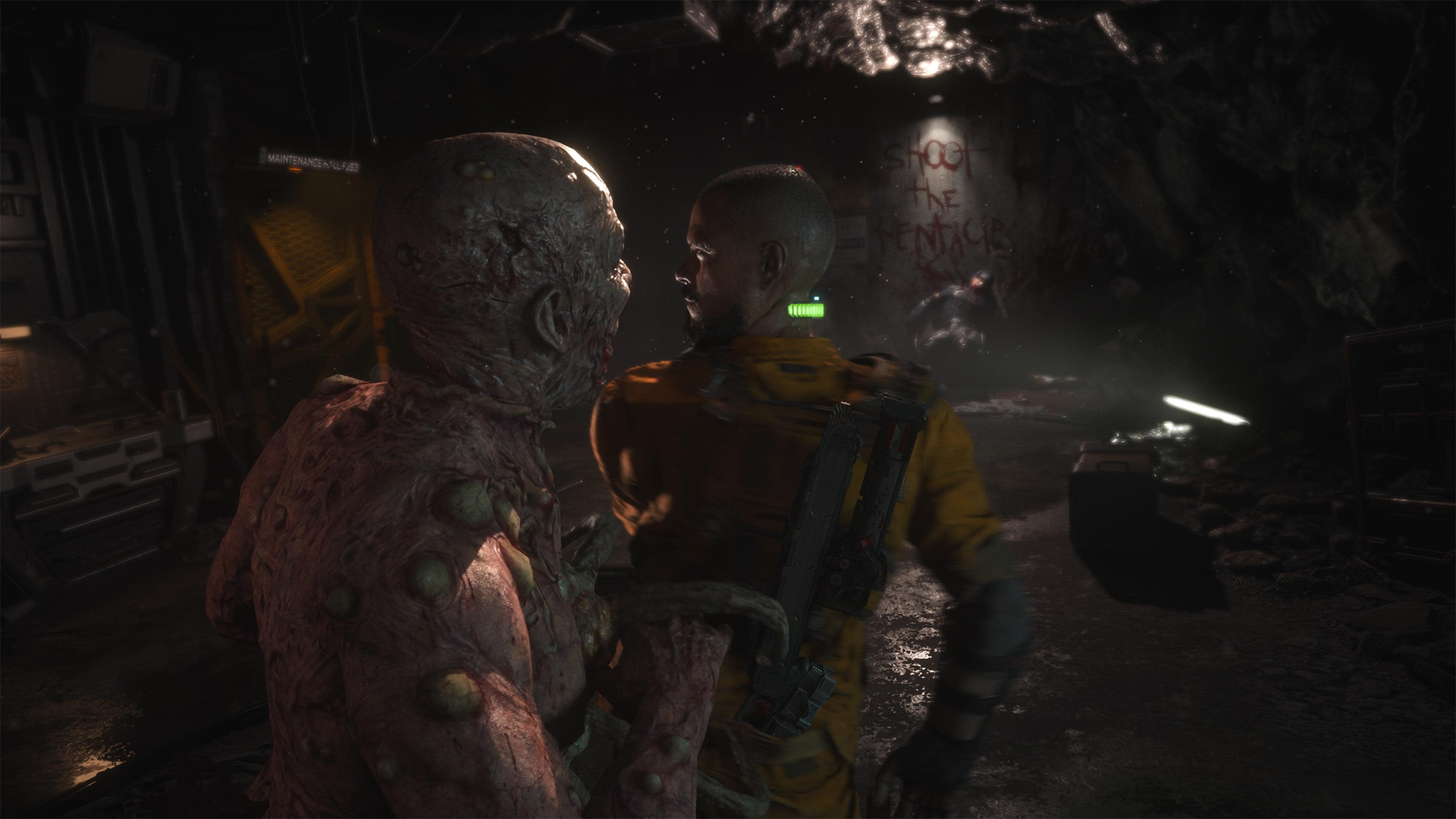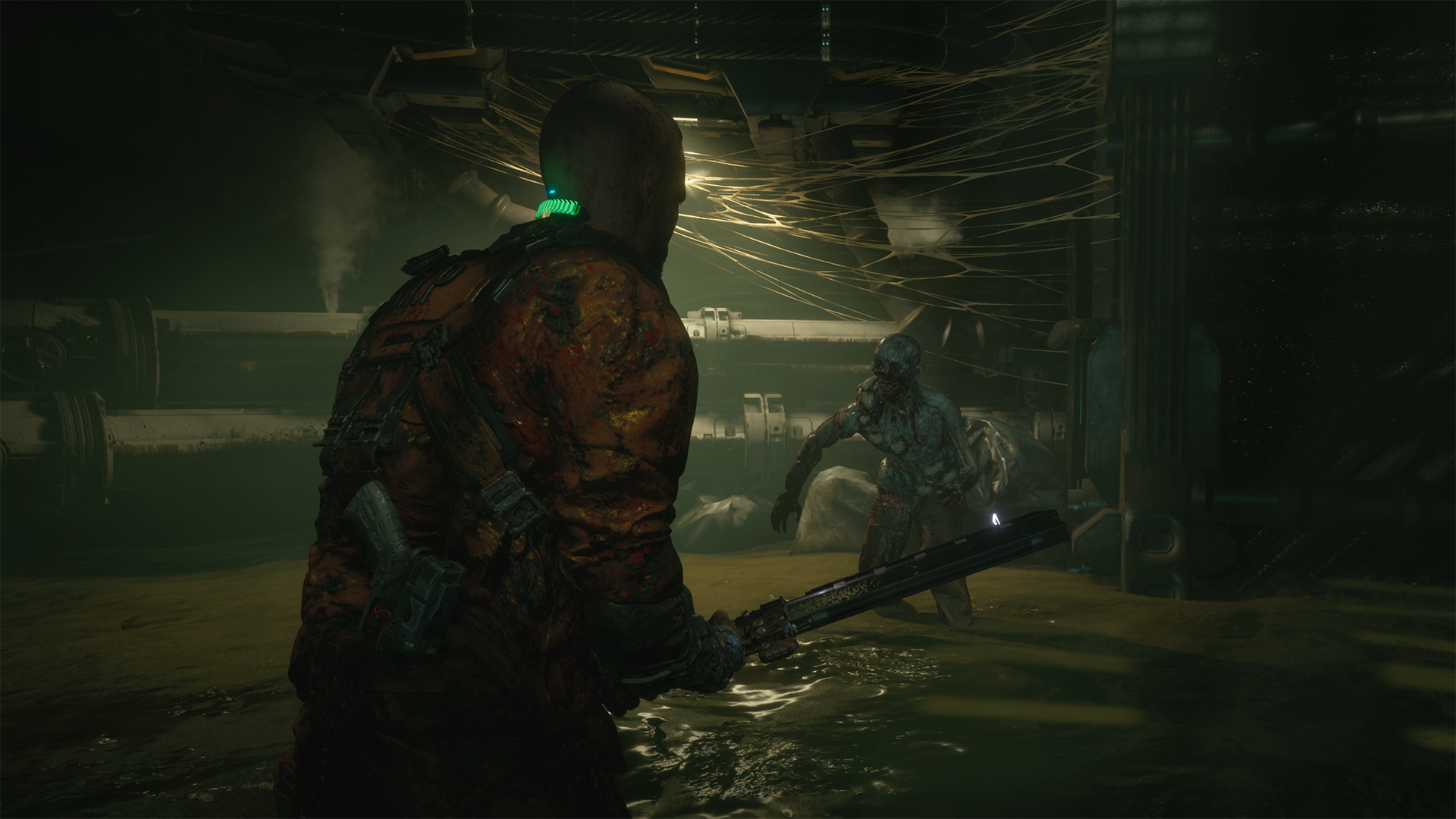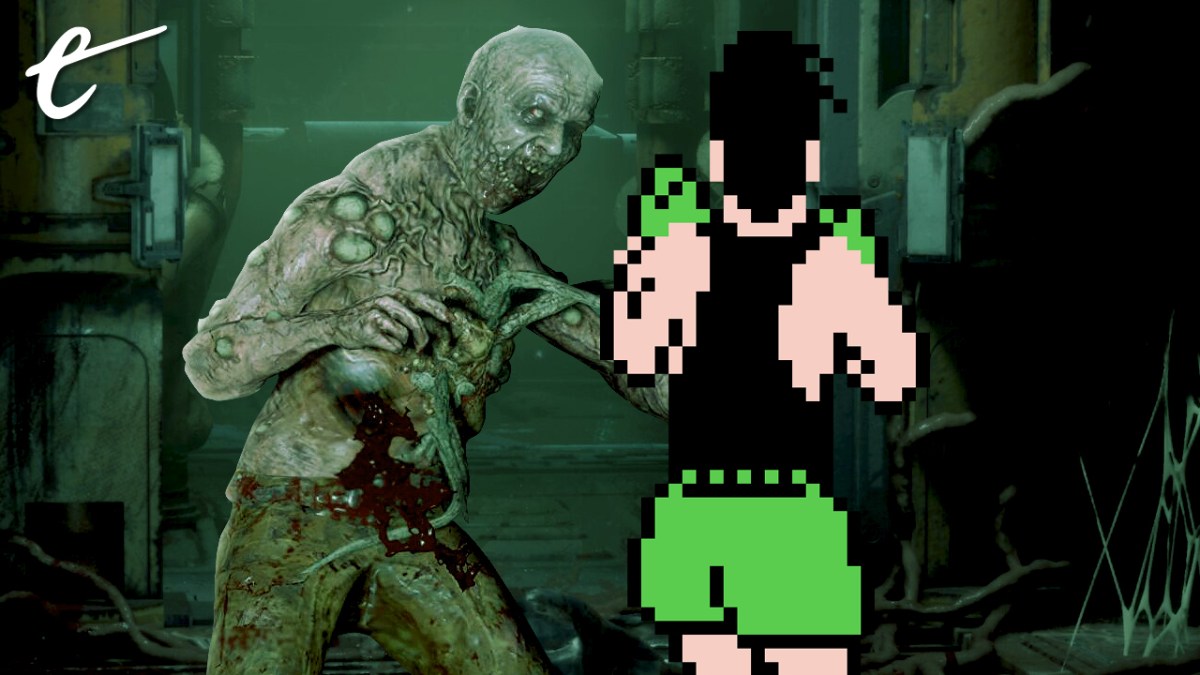One of the most divisive elements of the new sci-fi survival horror game The Callisto Protocol is its unusual approach to dodging. While you’re beating away terrifying malformed resurrected corpses, you don’t have the classic video game dodge roll to fall back on. Instead, your dodges come in the form of well-timed left-stick movements that make you duck enemy swings, and you alternate left and right dodges until you can counterattack. You can also block hits by pressing back on the stick against an attack, though that takes a small amount of your health.
Taking dodge off a button press is a huge shift for any action game, and there’s no doubt that it requires a lot of getting used to in the Callisto Protocol early game. Even when I had the hang of it, the difficulty of dodging kept me on edge in a way that certainly bolstered the tension, though it sometimes left me frustrated if I got brained by the last enemy in an arena and had to start all over. This unique system in The Callisto Protocol has been compared, in most cases unfavorably, to the classic boxing game Punch-Out!! Sure, this game occasionally makes you feel like Glass Joe in the toughest fights, but there’s still a lot to like in the desperate scraps you’ll get into in Black Iron Prison.
When the encounters in Callisto are at their best, the dodging complements the action smoothly. Reloading your gun mid-fight initially feels terrifying, but something about having dodge on the stick instead of a button makes it feel smoother to add some bullets to the chamber before or after a dodge. The more you fight these enemies, you’ll also realize times in their animations when you can sneak in melee strikes that end the barrage early, but it may cost a chunk of health if you’re wrong. This dodging definitely feels best in one-on-one scenarios, but being outnumbered is a necessary element of keeping you frantic and vulnerable in The Callisto Protocol.

This game isn’t a power fantasy by any stretch of the imagination, and you’re always barely getting through to the next area. There are no flashing attack indicators to warn you about flankers, and you can’t really outrun any of these mobs for longer than a second. If you get surrounded, you do really feel screwed, but you find the “Gravity Restraint Projector” (GRP) early on, which gives you limited telekinesis to reposition enemies in a pinch or impale them on some convenient wall spikes or other environmental hazards.
The weapon and equipment progression also does a decent job of complementing your naturally rising player skill, to make you feel like the enemies aren’t outpacing you too fast for most of the game. You can craft basic improvements that increase damage, combo length for your baton, or magazine size for guns, and my absolute favorite tree improved the GRP’s throw range and recharge rate.
I was sold on this combat system through most of the game, but I felt it went the wrong direction in the latter parts of the game. By scaling up the horde sizes and emphasizing ranged options, The Callisto Protocol distanced itself from the Punch-Out!! combat principles. I still enjoyed a lot of these fights but wished that there had been more melee modifications offered in the late game, as you don’t get any new melee options after picking up the strong but short-ranged Stun Baton in Chapter 2. You’re instead offered even more guns to craft, leaving you in the unsure position of whether you should invest in damage for a newer assault rifle or just ignore it for maxing out guns you already have. (Some friendly advice: Stay away from the assault rifle.)
After beating this game on the normal difficulty, I felt it could have been way stingier with ammunition as well. Sure, some tough scenarios will have you using more resources than you mean to, but you truly find so many guns, each with their own ammo type, that you pretty much always have some sort of firepower option by the end. The Callisto Protocol felt like it lost confidence in its melee system after the first boss encounter, even though I was having the most fun when I was wading into melee brawls and only using guns as a parting shot or final resort when surrounded.

If more variety were given to enemies overall, some players may not have soured on the dodge system as quickly. Besides a few enemies that spit bile at you, or the classic “crawl up and explode” mob that we’ve seen before, most zombies in The Callisto Protocol will just go for two or three punches or a grab that you button-mash to escape before giving you a chance to retaliate. If there were enemies that attacked with more unpredictable movements, at differing speed or with different animation tells, I think the stick-dodging could have really shined.
A frustrating time mechanic was also added to pretty much every base enemy past the middle of the game where they would sprout tentacles from their chest, and then they’d become much tankier and stronger unless you shoot them in time. Instead of bringing gunplay in to support melee scraps more fluidly, like the way you can steal a quickshot at the end of combos, this instead pressures you to ignore your baton and just try to line as many zombies up for shotgun blasts as you can. This mechanic seems like a cheap shortcut to pad out the length of encounters and also avoid designing different enemies in the late game.
Even given these issues, The Callisto Protocol has some incredible moments that are absolutely worth playing for a survival horror fan. If you’re interested in a cool haunted house ride where the displays will try to cave your head in, The Callisto Protocol had enough scares and fun fights to motivate me to see the credits. But the reliance on shooting towards the end sucks the tension out of the most important final fights. Even if there are elements that could be smoothed over though, I’m absolutely on board for a sequel or future DLC. I feel this team could make something truly excellent and thrilling with a second pass to build on what worked and what didn’t with this combat system.






Published: Dec 24, 2022 01:00 pm